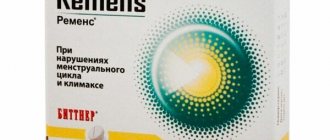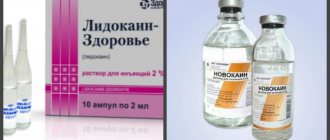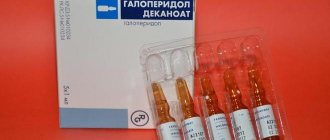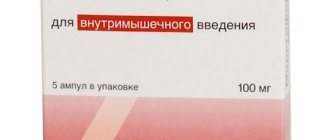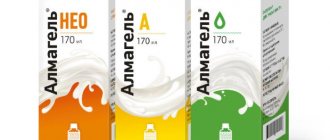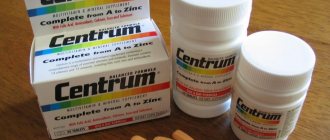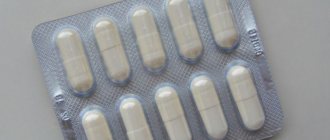Best before date
Adrenaline is sold in ready-made form, but can only be obtained with a doctor's prescription.
- The shelf life of this drug is 3 years;
- An open ampoule should not be used for more than a day.
- If there are several days left before the expiration date, then the drug can be used.
Attention! It is prohibited to use a drug that is expired or otherwise unsuitable! After the expiration date, adrenaline should not be taken.
What happens to the medicine over time? Over time, a slight precipitate may form in the medicinal solution and the activity of the substances may decrease slightly. However, the effectiveness of the drug will not change dramatically.
After the expiration date, the effectiveness decreases by 80%. The consequences may be irreversible. The drug adrenaline will not work in a life-or-death situation. For example, it will not save you from anaphylactic shock.
What do you need to know when storing a medicine?
- Check the expiration date first. It is indicated on the cardboard packaging or on the ampoule or jar itself (if it is a powder).
- Check the condition and integrity of the packaging, namely: visible flaws in the cardboard packaging, as well as the integrity of the ampoules or jars themselves. The label must clearly display the volume, concentration of the drug, expiration date and production date, as well as the name of the drug.
- Be sure to check the compliance of the characteristics specified in the instructions.
Adrenaline
During the treatment period, it is recommended to determine the concentration of potassium ions in the blood serum, measure blood pressure, diuresis, minute volume of blood flow, ECG, central venous pressure, pressure in the pulmonary artery and wedge pressure in the pulmonary capillaries.
Excessive doses of epinephrine during myocardial infarction may increase ischemia by increasing myocardial oxygen demand.
Increases plasma glucose levels, which is why diabetes mellitus requires higher doses of insulin and sulfonylurea derivatives.
Epinephrine is not advisable for long-term use (constriction of peripheral blood vessels, leading to the possible development of necrosis or gangrene).
Use for the correction of arterial hypotension during labor is not recommended as it may delay the second stage of labor; when administered in large doses to weaken uterine contractions, it can cause prolonged uterine atony with bleeding. When stopping treatment, the dose should be reduced gradually, because Sudden discontinuation of therapy may lead to severe hypotension.
Easily destroyed by alkalis and oxidizing agents. Sodium metabisulfite, which is part of the drug, may cause an allergic reaction, including symptoms of anaphylaxis and bronchospasm, especially in patients with a history of asthma or allergies. Epinephrine should be used with caution in patients with tetraplegia due to the increased sensitivity of these individuals to epinephrine.
A sharp increase in blood pressure when using adrenaline can lead to the development of hemorrhage, especially in elderly patients with cardiovascular diseases.
Patients with Parkinson's disease may experience psychomotor agitation or temporary worsening of symptoms of the disease when using epinephrine, and therefore caution should be exercised when using epinephrine in this category of individuals.
Do not re-inject into the same areas to avoid the development of tissue necrosis. Injection of the drug into the gluteal muscles is not recommended.
Epinephrine should be used with caution in elderly patients, patients with coronary heart disease, arterial hypertension, diabetes mellitus, hyperthyroidism, prostatic hyperplasia and urinary disorders.
Particular care must be taken when using epinephrine in patients with long-standing bronchial asthma, emphysema, and organic heart disease (cor pulmonale).
Epinephrine may cause cardiac arrhythmias and myocardial ischemia, especially in patients with coronary artery disease or cardiomyopathy.
Epinephrine increases cardiac output and causes peripheral vasoconstriction, which can lead to pulmonary edema.
Epinephrine causes constriction of the renal arterioles, which can lead to oliguria and renal failure.
Intramuscular injection of epinephrine should be carried out in the anterolateral surface of the thigh (in the vastus lateralis muscle). Injection of the drug into smaller muscles (for example, the deltoid muscle) is not recommended.
Rare cases of severe skin and soft tissue infections, including Clostridia necrotizing fasciitis and muscle necrosis (gas gangrene), have been reported at the site of epinephrine administration for the treatment of anaphylaxis. Patients should be warned to seek immediate medical attention if symptoms of infection such as persistent redness, warmth, swelling, or tenderness at the epinephrine injection site occur.
The drug should not be injected into the vessels of the fingers, hands and feet, because Epinephrine is a powerful vasoconstrictor and can lead to disruption of blood supply and tissue necrosis (gangrene).
Do not use the drug if color changes or sediment appears in the solution. The unused portion of the solution should be discarded.
Method of use
Epinephrine is used for intramuscular injections in a dosage of 0.3 to 0.75 ml. Subcutaneous injection of adrenaline is possible. During operations on the heart muscle, an injection is made directly into the ventricle of the heart with a syringe containing adrenaline. Sometimes it is necessary to administer the drug intravenously using a dropper. The doctor decides where to inject. Glaucoma is treated with a 1 - 2% solution of the drug in drops.
Directions for use and dosage
Solution for local use The solution is applied topically.
To stop bleeding, apply a tampon soaked in the solution to the wound.
Solution for injection The solution is intended for intramuscular (IM), subcutaneous (SC), intravenous (IV) drip or jet administration.
Recommended dosage regimen for adults:
- Anaphylactic shock and other immediate allergic reactions: IV slowly - 0.1-0.25 mg should be diluted in 10 ml of 0.9% sodium chloride solution. To achieve a clinical effect, therapy is continued by intravenous drip administration in a ratio of 1:10,000. In the absence of a real threat to the patient's life, it is recommended to administer the drug intramuscularly or subcutaneously at a dose of 0.3-0.5 mg; if necessary, the injection can be repeated at intervals of 10-20 minutes up to 3 times;
- Bronchial asthma: subcutaneously - 0.3-0.5 mg, to achieve the desired effect, repeated administration of the same dose is indicated every 20 minutes up to 3 times, or intravenously - 0.1-0.25 mg, diluted with 0.9% sodium chloride solution in a ratio of 1:10000;
- Arterial hypotension: intravenous drip at a rate of 0.001 mg per minute, it is possible to increase the rate of administration to 0.002-0.01 mg per minute;
- Asystole: intracardiac – 0.5 mg in 10 ml of 0.9% sodium chloride solution (or other solution). During resuscitation, the drug is administered intravenously at a dose of 0.5-1 mg every 3-5 minutes, diluted in 0.9% sodium chloride solution. When intubating the patient's trachea, administration can be carried out by endotracheal instillation in a dose exceeding the dose for intravenous administration by 2-2.5 times;
- Vasoconstrictor: intravenous drip at a rate of 0.001 mg per minute, the infusion rate can be increased to 0.002-0.01 mg per minute;
- Prolongation of the action of local anesthetics: the dose is prescribed at a concentration of 0.005 mg of the drug per 1 ml of anesthetic, for spinal anesthesia - 0.2-0.4 mg;
- Morgagni-Adams-Stokes syndrome (bradyarrhythmic form): 1 mg intravenously in 250 ml of 5% glucose solution, gradually increasing the infusion rate until a minimum sufficient number of heartbeats appears.
Recommended dosage for children:
- Asystole: for newborns – IV (slowly), 0.01-0.03 mg per 1 kg of child’s weight every 3-5 minutes. Children after 1 month of life - IV, 0.01 mg/kg, then 0.1 mg/kg every 3-5 minutes. After the administration of two standard doses, it is possible to switch to the administration of 0.2 mg/kg of the child’s weight with an interval of 5 minutes. Endotracheal administration is indicated;
- Anaphylactic shock: subcutaneous or intramuscular – 0.01 mg/kg, but not more than 0.3 mg. If necessary, the procedure is repeated with an interval of 15 minutes no more than 3 times;
- Bronchospasm: subcutaneously - 0.01 mg/kg, but not more than 0.3 mg, if necessary, the drug is administered every 15 minutes up to 3-4 times or every 4 hours.
Adrenaline injection solution can also be used topically to stop bleeding by applying a tampon soaked in the solution to the wound surface.
Drug interactions
- α- and β-adrenergic receptor blockers - epinephrine antagonists (when treating severe anaphylactic reactions with β-blockers, the effectiveness of epinephrine in patients is reduced, it is recommended to replace it with intravenous salbutamol);
- Other adrenergic agonists - may enhance the effect of epinephrine and the severity of side effects from the cardiovascular system;
- Cardiac glycosides, quinidine, tricyclic antidepressants, dopamine, inhalation anesthesia agents (halothane, methoxyflurane, enflurane, isoflurane), cocaine - increases the likelihood of developing arrhythmias (joint use is allowed with extreme caution, or is not allowed);
- Narcotic analgesics, sleeping pills, antihypertensive drugs, insulin and other hypoglycemic drugs - their effectiveness decreases;
- Diuretics – may increase the pressor effect of epinephrine;
- Monoamine oxidase inhibitors (selegiline, procarbazine, furazolidone) - can cause a sudden and pronounced increase in blood pressure, headache, cardiac arrhythmia, vomiting, hyperpyretic crisis;
- Nitrates – their therapeutic effect may be weakened;
- Phenoxybenzamine – tachycardia and increased hypotensive effect are possible;
- Phenytoin - sudden decrease in blood pressure and bradycardia (depending on the rate of administration and dose);
- Thyroid hormone preparations – mutual enhancement of action;
- Medicines that prolong the QT interval (including astemizole, cisapride, terfenadine) – prolongation of the QT interval;
- Diatrizoates, iothalamic or yoxaglic acids – increased neurological effects;
- Ergot alkaloids – increased vasoconstrictor effect (up to severe ischemia and development of gangrene).
Release form and composition
Dosage forms:
- Solution for injection: slightly colored or colorless transparent liquid with a specific odor (1 ml in ampoules, 5 ampoules in a blister pack, 1 or 2 packages in a cardboard box, complete with a scarifier or ampoule knife (or without them); for a hospital - 20, 50 or 100 packages in cardboard boxes);
- Solution for topical use 0.1%: transparent, colorless or slightly colored liquid with a specific odor (30 ml in dark glass bottles, 1 bottle in a cardboard box).
1 ml of solution for injection contains:
- Active ingredient: epinephrine – 1 mg;
- Auxiliary components: sodium disulfite (sodium metabisulfite), hydrochloric acid, sodium chloride, chlorobutanol hemihydrate (chlorobutanol hydrate), glycerol (glycerol), disodium edetate (disodium salt of ethylenediaminetetraacetic acid), water for injection.
1 ml of topical solution contains:
- Active ingredient: epinephrine – 1 mg;
- Auxiliary components: sodium metabisulfite, sodium chloride, chlorobutanol hydrate, glycerin (glycerol), disodium salt of ethylenediaminetetraacetic acid (disodium edetate), hydrochloric acid solution 0.01 M.
Signs of drug overdose
Symptoms of an overdose are an increase in blood pressure much higher than normal, a rapid pulse, gradually turning into bradycardia; paleness of the skin and its coldness, headache and vomiting. More severe cases of overdose reactions are myocardial infarction, craniocerebral hemorrhage, and pulmonary edema. The worst sign of overdose is death. When the drug is administered intravenously, and this is done by a specialist, an overdose occurs extremely rarely. The hospital always has a defibrillator for cases of ventricular fibrillation.
At the first symptoms of overdose, administration of the solution must be stopped. Alpha-blockers are used to lower blood pressure, and beta-blockers are used to restore normal heart rhythm.
Effects of adrenaline on physiological systems during stress
The targeted effect of adrenaline on the body is associated with the preparation of a simultaneous response from all organ systems to ensure a protective reaction in a stressful situation:
- there is a sharp narrowing of blood vessels;
- blood pressure increases;
- the work of the heart muscle accelerates;
- the lung muscles relax to allow large amounts of air to enter freely (this is necessary to speed up the production of large amounts of energy);
- the level of glucose in the blood increases, which triggers the processes of ATP synthesis;
- Organic substances actively decompose to increase the level of metabolic processes.
Side effects
- Nervous system: often – anxiety, headache, tremor; uncommon – fatigue, dizziness, nervousness, personality disorders (disorientation, psychomotor agitation, memory impairment and psychotic disorders: panic, aggressive behavior, paranoia, schizophrenia-like disorders), muscle twitching, sleep disturbance;
- Cardiovascular system: infrequently - tachycardia, angina pectoris, bradycardia, palpitations, decrease or increase in blood pressure (BP), against the background of high doses - ventricular arrhythmias (including ventricular fibrillation); rarely – chest pain, arrhythmia;
- Digestive system: often – nausea, vomiting;
- Allergic reactions: uncommon - skin rash, bronchospasm, erythema multiforme, angioedema;
- Urinary system: rarely - painful, difficult urination in patients with prostatic hyperplasia;
- Other: infrequently - increased sweating; rarely – hypokalemia.
Additionally, due to the use of injection solution:
- Cardiovascular system: rarely - pulmonary edema;
- Nervous system: often – tic; uncommon – nausea, vomiting;
- Local reactions: uncommon - burning and/or pain at the site of intramuscular injection.
The occurrence of these or other undesirable effects should be reported to your doctor.
How do adrenaline injections work?
Pharmacodynamics. The effect of the injection lies in its effect on alpha and beta adrenaline receptors. What will happen if you inject with such a substance? The body's reaction to the use of epinephrine is to narrow the blood vessels in the abdominal cavity, on the skin or mucous membranes. The vascular system of the muscles reacts much less to hormone changes. The body can react to injections like this:
- adrenaline receptors of the heart react to the drug, thereby causing an increase in the rate of contraction of the ventricular muscles;
- there is an increase in glucose in the blood system;
- enrichment of the body with glucose is significantly accelerated, which allows you to obtain a large amount of necessary energy in a short time;
- the respiratory tract expands, the body receives more necessary oxygen;
- blood pressure increases significantly in a short time;
- The body stops responding to possible pathogens for a certain period of time.
Adrenaline can also suppress the production of fat deposits, improve muscle activity, and activate the central nervous system:
- stimulates the production of hormones,
- improves the functioning of the adrenal cortex (which improves the functioning of hormones),
- Enzymes are activated
- The functioning of the blood system is significantly improved.
Contraindications
Contraindications to the use of Adrenaline are:
- Simultaneous use with cyclopropane, fluorotane and chloroform (since such a combination can provoke severe arrhythmia);
- Simultaneous use with oxytocin and antihistamines;
- Aneurysm;
- Hypertonic disease;
- Endocrine disorders (in particular diabetes mellitus);
- Glaucoma;
- Atherosclerotic vascular lesions;
- Hyperthyroidism;
- Pregnancy and lactation period.
